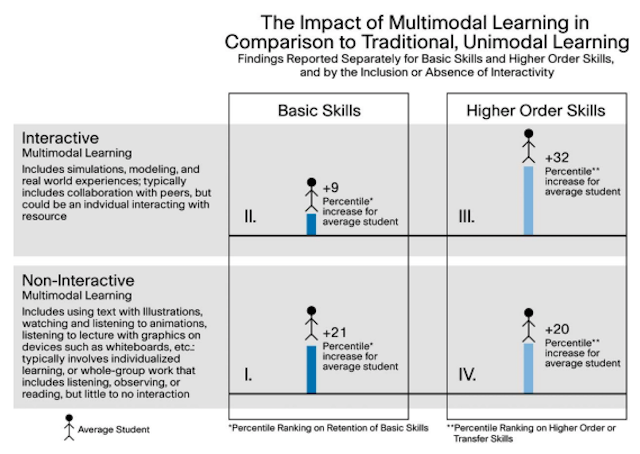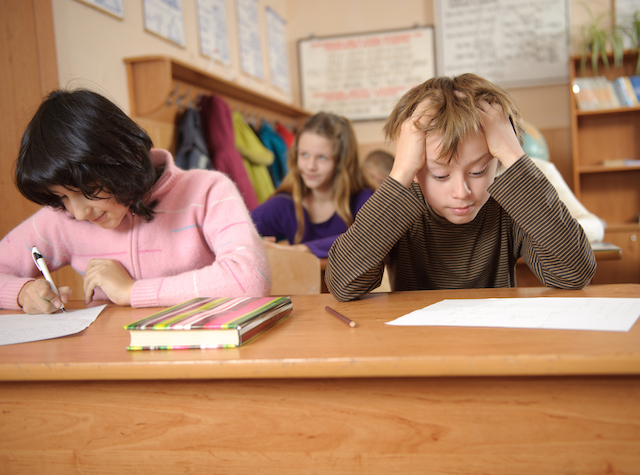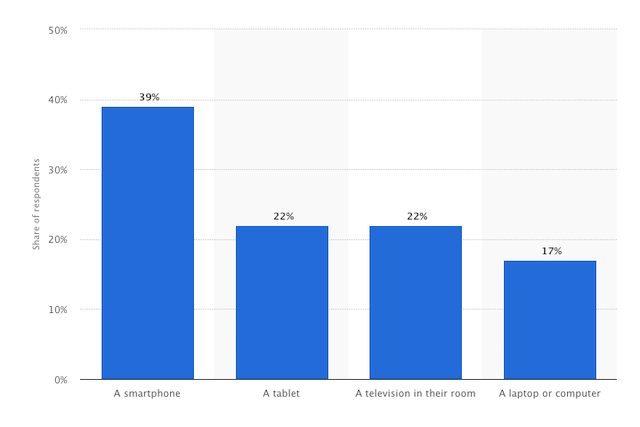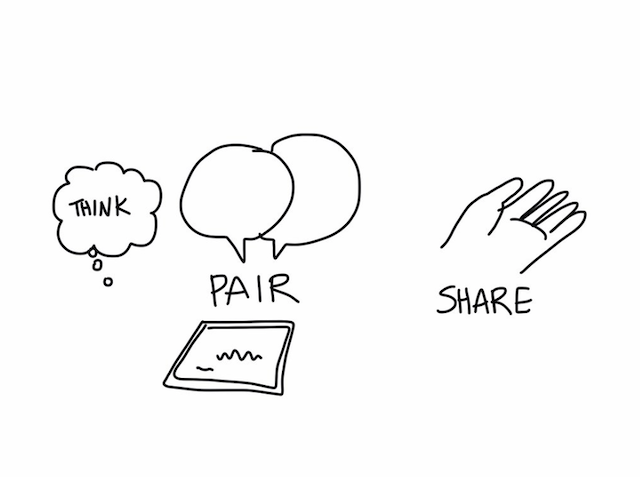Importance of Students Learning to Read by Grade Three
- Multimodal learning definition
- Importance of multimodal learning
- Multimodal learning strategies
- 5 Guidelines for creating a multimodal learning environment
- 5 Examples of multimodal learning activities for the classroom
- Marshal in-game adventures with classroom lessons
- Collect insights into student progress and learning gaps
- Send differentiated content and Assessments in merely a few clicks
What is multimodal learning?
Multimodal learning in education means teaching concepts using multiple modes. Modes are channels of data, or anything that communicates pregnant in some way, including:- Pictures
- Illustrations
- Audio
- Speech
- Writing and impress
- Music
- Move
- Gestures
- Facial expressions
- Colors
What are learning styles?
Learning styles grouping together different ways individuals prefer to learn. They categorize people based on their "mode" of learning, or the way they learn best. Every private has a unique learning preference that falls into i, some or all of these categories. Consider this scenario: Imagine someone is explaining a new concept to you, and you lot're having trouble understanding them. What will help you lot empathize the all-time -- is information technology:- Seeing a diagram or illustration about the concept?
- The person repeating themselves, or explaining things verbally in further detail?
- Seeing a written caption?
- Connecting the concept to a existent-life example?
The VARK model of learning
There are a few dissimilar models to explain learning styles. One of the near popular is the VARK model, created past New Zealand teacher, Neil Fleming. VARK model. Epitome source: Kompas MudaThe subsections of the VARK model are:
VARK model. Epitome source: Kompas MudaThe subsections of the VARK model are: - Visual -- these people acquire best by seeing , responding to visual cues like images, graphs or charts. They might be distracted by seeing things outside.
- Aural -- these people learn all-time by hearing , responding to auditory cues like verbal education, discussions or songs. They might exist distracted past outside noises.
- Read/Write -- this is sometimes listed as a subsection of the visual category, but the VARK model puts it in its own category. These people learn best past reading and writing , responding to written cues like lecture notes, books and cue cards. They might exist distracted by poorly worded text, or text that doesn't lucifer speech.
- Kinesthetic -- these people learn all-time by doing, responding to tactile cues like movement, deportment and existent-life examples. They might be distracted by uncomfortable seats or room temperatures.
The multimodal learning style
Some people strongly prefer one of the 4 learning types. But many others have a shared preference amid two or more types, making them multimodal learners. Multimodal learners have a near-equal preference for dissimilar learning modes and can receive input from whatsoever of these modes. Some multimodal learners, however, are dissimilar and require multiple inputs to learn. Image source: VARKA multimodal learning style works well-nigh finer with many communication inputs, or modes. A multimodal learner will thrive in a comprehensive learning environment that uses visual, auditory and kinesthetic inputs -- both verbal and non-verbal -- including videos, images, actions, real-life examples and hands-on activities. https://world wide web.youtube.com/spotter?v=DTSpCoYVpmo
Image source: VARKA multimodal learning style works well-nigh finer with many communication inputs, or modes. A multimodal learner will thrive in a comprehensive learning environment that uses visual, auditory and kinesthetic inputs -- both verbal and non-verbal -- including videos, images, actions, real-life examples and hands-on activities. https://world wide web.youtube.com/spotter?v=DTSpCoYVpmo Why is multimodal learning important?
Students come to schoolhouse with a wide variety of learning styles. As such, the ideal educational experience should represent all modes and support each of these styles. Multimodality supports a universal design for learning past communicating concepts in the virtually effective ways and making sure everyone gets exactly what they need. For example, having:- Both text and audio supports reading and hearing
- Images and animation can help focus attending
- Examples tin aid agreement
 Source: CiscoSimilarly, a study on English language learners institute improvements in student writing abilities when they used multimodal learning strategies. Another study institute most students prefer to take visual inputs involved in lessons, rather than text alone. Nigh interactions are multimodal. At that place are very few occasions where someone communicates using only one mode, and then didactics children should be the same. Using one mode to teach -- for example, reading from a textbook -- doesn't stimulate students' minds or prepare them for real globe situations.
Source: CiscoSimilarly, a study on English language learners institute improvements in student writing abilities when they used multimodal learning strategies. Another study institute most students prefer to take visual inputs involved in lessons, rather than text alone. Nigh interactions are multimodal. At that place are very few occasions where someone communicates using only one mode, and then didactics children should be the same. Using one mode to teach -- for example, reading from a textbook -- doesn't stimulate students' minds or prepare them for real globe situations. Multimodal learning strategies
You know information technology's important, only how can yous back up multimodal learning at your school? To come up up with useful multimodal learning strategies, it's all-time to expect at strategies for each learning way. The chart below outlines strategies for educators to support each learning mode. It besides includes studying strategies for students, ofttimes referred to equally SWOT, or "report without tears."Strategies for each learning style
| Learning Style | Teaching strategies for this style | SWOT strategies for students |
| Visual |
|
|
| Audible / Auditory |
|
|
| Read / Write |
|
|
| Kinesthetic / Tactile |
|
|
Multimodal learning strategies
Since the multimodal learning style involves a combination of learning modalities, multimodal learning strategies crave strategies from each way. Multimodal learning incorporates multimedia and uses different strategies at one time. An ideal multimodal learning environment would contain as many of the to a higher place strategies as possible. Let's await at an example of using multimodal strategies in the classroom. To help students understand textbook textile, a instructor might assign the reading then give a lecture using a multimedia presentation, including videos and images. Then, they may plan an in-class activity to give real-life perspective and let students appoint with the content in more concrete ways. In this scenario, teachers are simultaneously exposing students to strategies from each learning manner! Doing this gives students a well-rounded representation of course material for all learning needs.5 Guidelines for a multimodal learning environment
Multimodal learning environments back up the need for differentiated instruction, because all learning needs and helping every pupil succeed. Follow these five classroom guidelines to create a multimodal learning surround at your school.1. Use multimodal texts
Multimodal texts are forms of communication that use a variety of modes. They're seen in multimedia -- a course of content delivery that strategically involves words, visuals, sounds and other components to enrich learners. For case, a video shown in class should involve captions, images, narration, music and examples to exist multimodal. https://www.youtube.com/lookout man?v=se3G8LV40gg Students today regularly interact with many dissimilar forms of text, so educators should reflect this in their classroom lessons. Every bit another example, instead of leaning on more than traditional, lecture-style math lessons, teachers can use math puzzles to assist teach the same concept. The puzzle would be a form of multimodal text that provides interaction and visual stimulation. Multimodal texts in the classroom could include many other things that contribute to a full learning experience, such as:- Infographics
- Videos
- Slides
- Visual worksheets
- Interactive learning
- Online learning
2. Reduce overload
Multimodal learning involves interaction with many different inputs at in one case. If the teacher doesn't properly organize the output, students can reach overload, becoming overwhelmed, overstimulated and, ultimately, disengaged in class. To combat this, multimodal learning plans should be organized and strategic. Multimedia in learning must provide enough stimulation to foster a positive learning environment, just not then much that it overwhelms students. Include every mode, only make certain placement, timing and implementation is thoughtful and considerate of students' learning.
To combat this, multimodal learning plans should be organized and strategic. Multimedia in learning must provide enough stimulation to foster a positive learning environment, just not then much that it overwhelms students. Include every mode, only make certain placement, timing and implementation is thoughtful and considerate of students' learning. The best ways to reduce overload are:
- Consider timing and spacing of multimodal texts -- Present words and pictures that describe the same concept close to each other and at the same time. This reduces confusion and ensures students tin can process both forms of input simultaneously, interpreting significant from the combined sources.
- Limit distractions -- Take steps to limit unnecessary outside input and so students can focus on the important things. Reduce outside noise and visuals, ensure comfortable seating and avert strong lighting or smells.
- Take frequent breaks -- Give students brain breaks every 20 minutes, where they'll go up and motility around with a fun activity to recharge the brain and regain focus.
- Change activities often -- A multimodal activity should appoint your students, only doing the same action for too long can get stale. Brand sure to switch between unlike learning formats to keep students interested.
- Find a proficient balance -- Using multiple modes doesn't mean including everything you perchance can. Inputs that are too busy can go overwhelming for students, so choose a few key components for each manner to keep things simple.
3. Back up digital learning opportunities
In today's guild, learning should reflect new digital modes that are used in the real earth. Incorporating technology into learning helps teachers and students go on upwardly with an e'er-irresolute landscape of communication, and stimulates multiple senses at in one case. Digital platforms are constantly gaining popularity amid youth -- and very young children are no exception. A 2018 report on children's media devices in the Us found nearly 40% of American children owned their own smartphones. Epitome source: StatistaNew technologies hateful new modes of communication for students to suit to, and educators should include these modes to prepare students for careers in an increasingly digital mural. Some other study on pupil engagement and multimodal learning showed student appointment is the biggest motivator for adding educational technologies to the classroom. Technological modes are familiar and engaging to children. Students are excited about technology and desire to use it, and then digital learning opportunities are necessary for a well-rounded multimodal learning environment. Some of those ways can include game-based learning, online research, tests, assignments and much more.
Epitome source: StatistaNew technologies hateful new modes of communication for students to suit to, and educators should include these modes to prepare students for careers in an increasingly digital mural. Some other study on pupil engagement and multimodal learning showed student appointment is the biggest motivator for adding educational technologies to the classroom. Technological modes are familiar and engaging to children. Students are excited about technology and desire to use it, and then digital learning opportunities are necessary for a well-rounded multimodal learning environment. Some of those ways can include game-based learning, online research, tests, assignments and much more. 4. Offer multimodal assignments
When instruction is multimodal, assignments and assessments should exist, besides. The best way to create a positive school culture that encourages two-fashion communication is to encourage students to use multiple modes in their assignments. Skillful multimodal learning is interactive and puts student interest first -- i.due east., learning relies on how students react to the material they learn. To do this, create dynamic assignments that give students freedom to express their understanding of concepts in many creative ways. Multimodal assignments -- e.thousand., guided activities, group projects, reflection exercises, presentations and tests -- get students using multiple modes of communication and so they can positively exercise their individual learning styles.5. Provide multimodal feedback
If education and assignments are multimodal, feedback should be also. To give effective multimodal feedback, you should consider two things:- What is being assessed?
- How are you giving feedback?
5 Examples of multimodal learning activities
Now that you know the basics, get inspired by these v examples of multimodal learning in the classroom.i. Educational games
Almost all games naturally use many modes at once -- words, images, colors, shapes, speech, movement and more than. Plus, kids tin can't become enough of them. Students accept so much fun playing games that they often don't realize they're learning at the same time! Teachers can bring many unlike games to their classrooms to aid students learn and do relevant skills. For case, after a traditional multiplication lesson, classes can play multiplication games for a fun, multimodal feel that solidifies learning. Digital game platforms similar Prodigy are another bully option for classrooms, adding an extra manner to the learning feel: engineering science. Prodigy Math Game is an adaptive math platform that helps students from 1st to eighth grade practice more 1,500 curriculum-aligned math skills in an engaging, multimodal format. Used past millions of teachers and students around the world, this interactive game provides written questions, visual representations, adaptive feedback, supportive technology and collaboration — incorporating many different communication modes into i highly engaging math action. Since the platform uses multimedia, its educational benefits tin accomplish kids with varied learning styles and back up their private development in math. Prodigy makes it easy to reinforce in-class lessons and target specific pupil needs using differentiated instruction. Plus, the Reports tool helps teachers rails student comprehension, progress and engagement. This means you lot can speedily access important data to ensure students are supported and able to reach their total potentials.Students are more confident considering of the actress practice they receive with Prodigy. My students typically score higher than others on commune screeners and math benchmarks because I am able to individualize and differentiate instruction using the Prodigy reports. Kimberly Martin 2d Grade Teacher Wisconsin Rapids Public Schools
2. Recall-pair-share
This collaborative learning strategy improves pupil understanding of material, cooperation with classmates and expression of ideas. It's also a cracking method for conducting formative assessments. Paradigm source: Giulia Forsythe on FlickrCall up-pair-share follows three simple steps:
Paradigm source: Giulia Forsythe on FlickrCall up-pair-share follows three simple steps: - Call back -- students take time to think nearly the lesson material individually.
- Pair -- students pair upwardly to discuss their ideas and findings with each other.
- Share -- each pair shares their thoughts with the class and answers questions from classmates.
iii. Case-based learning
Use real-life scenarios to introduce or supplement lessons and make relevant connections to school curriculum. Case-based learning means lessons revolve around actual case studies. Students read, hear or see real examples that relate to the concepts they're learning in grade. Teachers facilitate form discussions about these cases and ensure students are making important connections. To accept learning fifty-fifty further, teachers can also assign questions or projects about the cases. This method gives concrete evidence that the things learned in grade are actually useful and meaningful in the real world, motivating students to larn more.4. Personalized journal entries
Journal entries are a tried-and-truthful reflection exercise, where students tin can put class material into their own words and think virtually what they've learned. Turn periodical entries into a multimodal activity by making them personalized. Let students complete entries in a manner that helps them limited their thoughts all-time. This could include written entries, charts, illustrations, videos, podcasts or example stories.
Turn periodical entries into a multimodal activity by making them personalized. Let students complete entries in a manner that helps them limited their thoughts all-time. This could include written entries, charts, illustrations, videos, podcasts or example stories. 5. Multimedia research projects
Encourage multimodal research with projects that crave various sources and modes. New forms of media are growing in popularity, giving students many avenues to observe information. Multimedia research projects crave students to notice information from dissimilar media sources, both traditionally and digitally. Assign research projects where students must reference at least three different media sources. This can include books, digital libraries, news clips, podcasts and online manufactures. And then, have students create multimodal presentations of enquiry findings, in whatever format they choose.Concluding thoughts on multimodal learning
When educational environments are optimized for multimodal learning, every student has the opportunity to learn and grow in their ain fashion. Everyday life is filled with multimodal inputs, and the best teaching methods should reflect this variety. Remember: every student learns differently. Then, a multimodal approach must provide the most relevant and effective modes of communication and options for expression. Use the in a higher place strategies and examples to create a well-rounded multimodal environment at your schoolhouse. Doing then will help every student reach their highest potential. Looking for more multimodal learning opportunities at your school? Try Prodigy — the adaptive curriculum-aligned math platform used by millions of teachers and students effectually the world. Teachers tin use Prodigy to:- Align in-game adventures with classroom lessons
- Collect insights into educatee progress and learning gaps
- Transport differentiated content and Assessments in just a few clicks
Sign upward for your complimentary teacher account today!
Source: https://www.prodigygame.com/main-en/blog/multimodal-learning/
0 Response to "Importance of Students Learning to Read by Grade Three"
Post a Comment